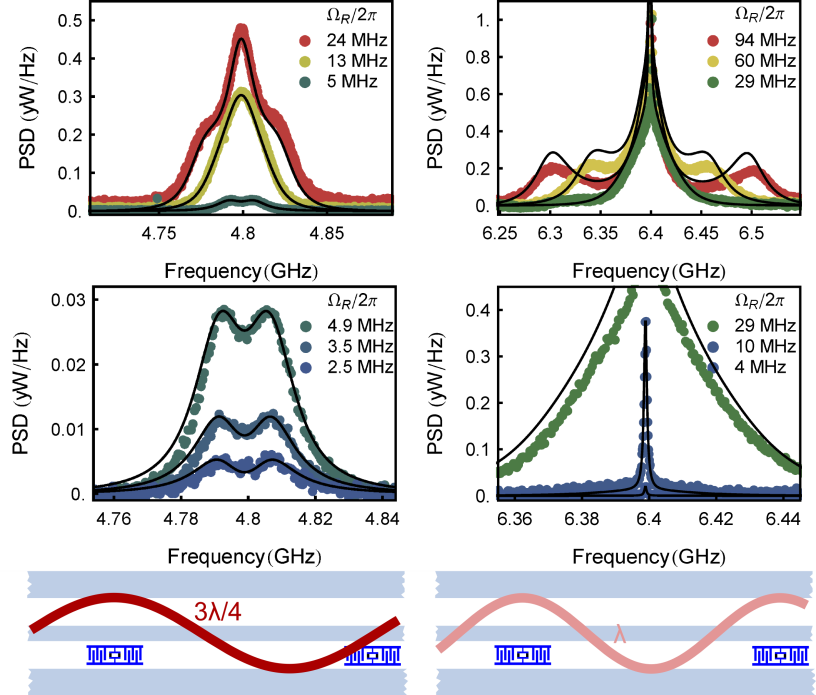Suppose you leave your house in Zurich early in the morning, and you set off walking in a random direction, without a compass, GPS or looking at the signs. What is the probability of ending up in your lab at ETH Zurich’s Hoenggerberg Campus? And what is your probability of ending up for example at the ETH main building? Either one is not very high, certainly. Now suppose you wake up in a tunnel directly connecting the two sites. How does this affect your chances to end up at either place?
Wanting to investigate the interactions between atoms in an open space caused by the exchange of photons, we realized that these interactions would likewise be greatly increased by putting the atoms and photons in a purpose-made tunnel. Superconducting qubits were used as artificial atoms and a coplanar waveguide transmission line as the tunnel. The qubits are physically separated by about 2 centimeters, but the separation between the qubits in units of their transition wavelength (λr) can be varied by tuning their transition frequencies. In this way, we have varied the effective distance between the qubits from 3λr/4 to λr.
 |
| Figure 1: In a transmission line photons are forced to travel along the line connecting the two qubits, mediating interactions between the two. By tuning the qubit emission wavelength we tune the effective distance between two qubits. |
We have demonstrated for the first time that strong interactions between two distant superconducting qubits in an open environment exist. When the two qubits are separated by multiples of λr/2, we observe the formation of super- and subradiant states. The subradiant state was found to have a lifetime more than 100 times as long as the lifetime of the superradiant state. For perspective, in initial experiments showing similar effects in ions, the subradiant state lived about 1.03 times as long as the superradiant state. Finding a two-qubit state in an open environment with a lifetime two orders of magnitude longer than a single qubit suggests that these systems could potentially be used as a quantum memory.
Furthermore, when the qubits are separated by odd multiples of λr/4, an exchange interaction between the qubits emerges which is mediated by the vacuum fluctuations of the 1D continuum at all frequencies. To our knowledge, our work presents the first observation of an exchange-type interaction mediated by photons over larger distances, i.e. the first instance of quantum systems interacting coherently at a distance, in a free space. We find good agreement of our experimental findings with the theory (Lalumiere et. al., Phys Rev A 88, 043806, 2013).
 |
| Figure 2: Interaction effects are revealed when measuring resonance fluorescence. An exchange splitting is seen at qubit separations of 3λr/4, while super- and subradiant states with drastically different lifetimes form for qubits separated by λr. |
Full article:
http://www.sciencemag.org/content/early/2013/11/13/science.1244324.abstract
A. F. van Loo, A. Fedorov, K. Lalumière, B. C. Sanders, A. Blais, A. Wallraff, Science, 2013


